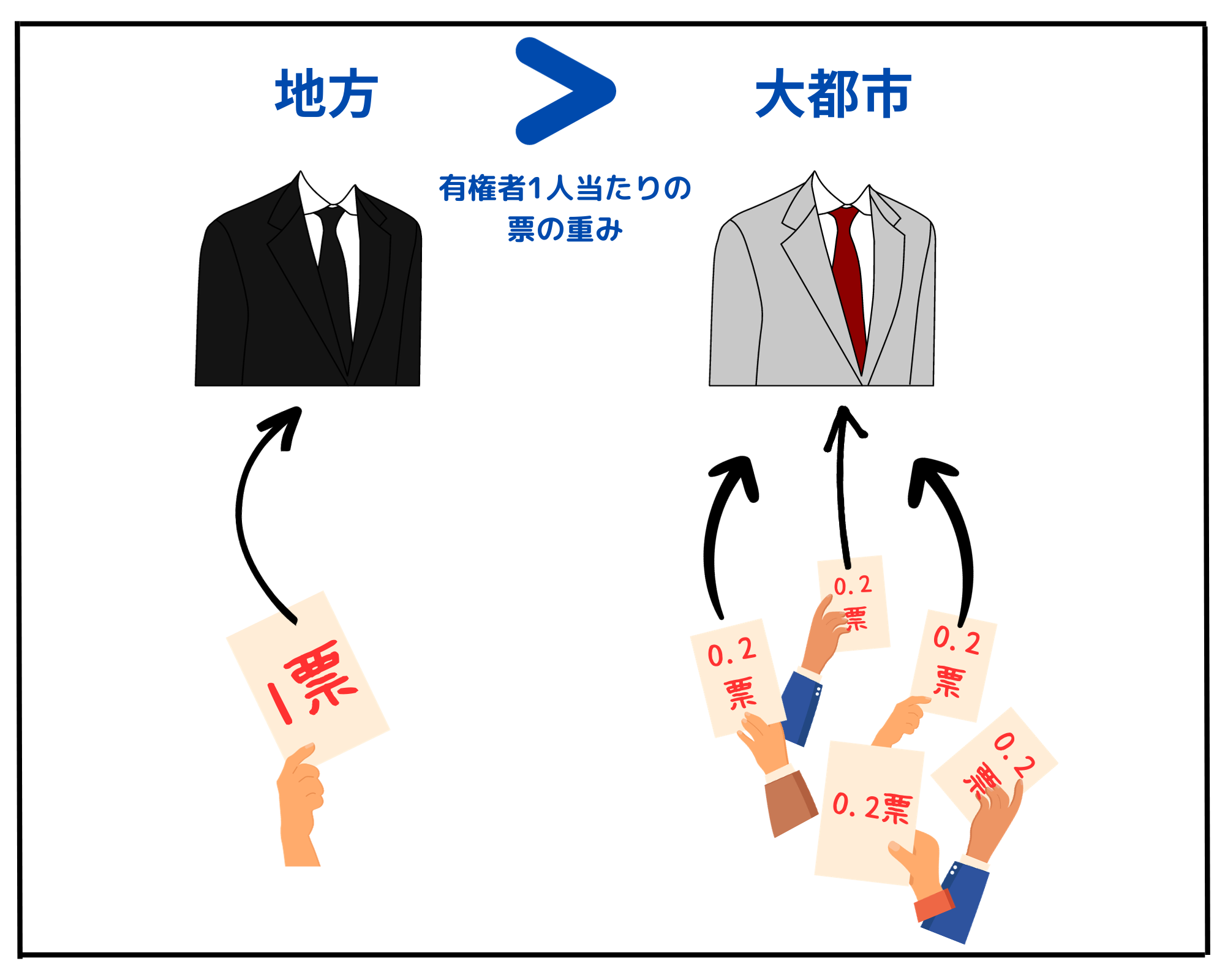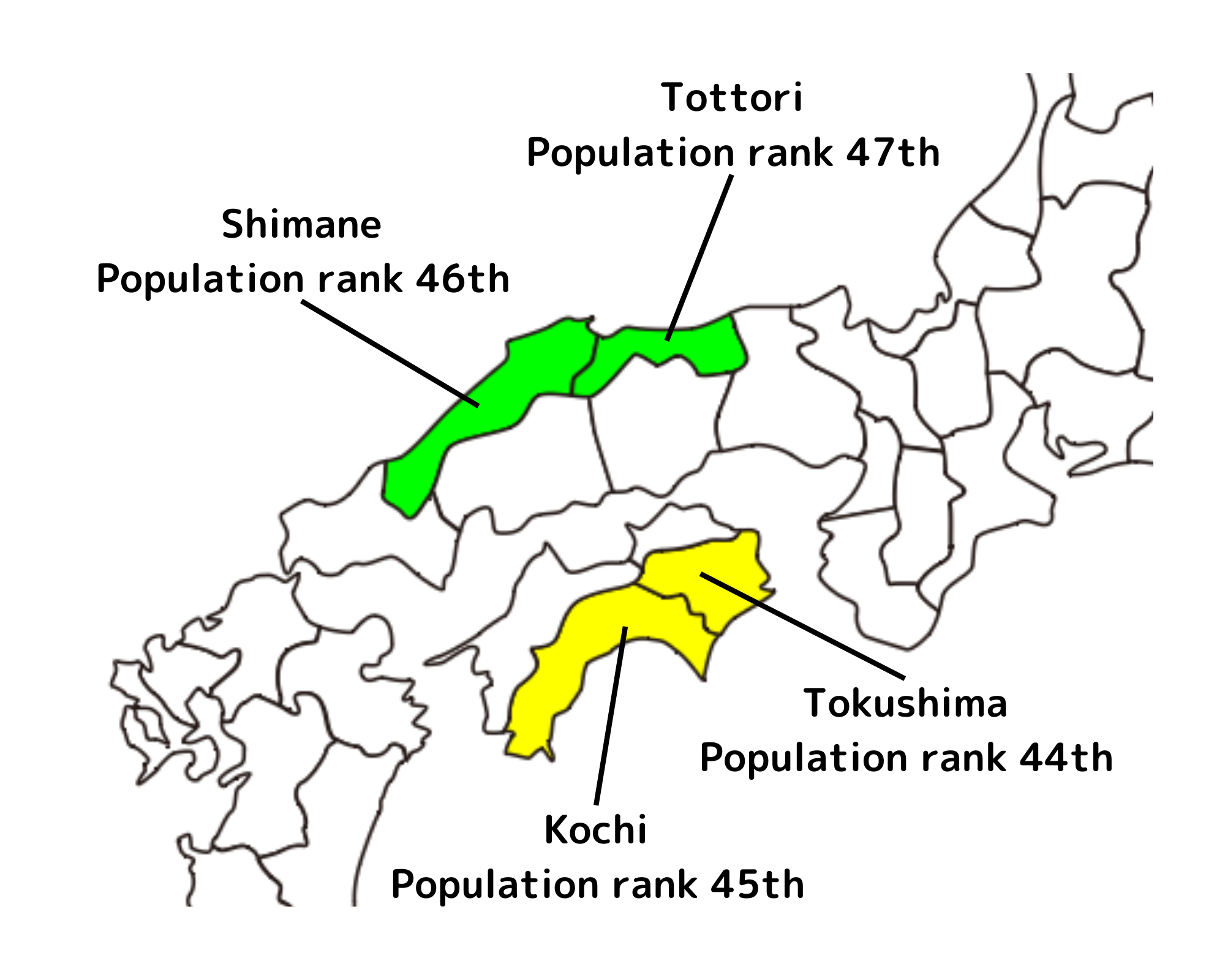Elections are held to elect people who will represent us, the people, in politics, but there are problems with such elections.
What exactly is the problem?
Measure of malapportionment of electorates
What is vote disparity?
The basis of democracy is elections. And the value of each vote given to each person must be equal.
But now we have a situation where the value of the district is no longer equal depending on the population of the district.
The difference in the number of voters or population in different districts in the same election is called
the disparity in the value of one vote or the value of each electorate member.
Occurring problems
- A vote becomes more valuable with fewer voters and less valuable with more voters. This causes a disparity in votes and makes it difficult for the opinions of people in rural areas with small populations to be taken into account.
The population of rural areas is declining every year, and this has led to a growing gap between the population of each electoral district and that of urban areas.
However, if the number of local councilors is reduced too much along with it, the voices of local people will not be heard.
So, since a larger percentage of the elderly than the young remain in rural areas the opinions of the elderly are more easily incorporated.- The disparity in the value of a vote is contrary to the 14th Amendment of the Constitution, which states that all people are equal before the law. Generally, unconstitutionality is defined as a two-fold disparity in votes.
- Establishment of a combined district
- Introduction of the Adams Method

Article 14 of the Constitution of Japan
All citizens shall be equal before the law and shall not be discriminated against in political, economic or social relations on the basis of race, creed, sex, social status or family origin.
No system of nobility such as the nobility shall be recognized.
Counter-measure
The "giai-ward" system, introduced in the House of Councillors elections, is a system whereby a single electoral district is created across prefectural boundaries.
The House of Councillors election is made up of two types of constituencies: "electoral districts" for each prefecture, and "proportional representation" for each district throughout the country.
Of these, the number of electoral districts is allocated to each prefecture according to its population, and half of them are re-elected every three years, We was troubled
by the "vote disparity,"which canno
As a key to solve this problem, "combining districts"was introduced in the 2016 Upper House election.
The two constituencies created in 2013 by the combining of districts are"Tottori/Shimane" and "Tokushima/Kochi."
The disparity in the number of votes has been greatly improved by combining the districts into one district in neighboring prefectures, whereas before they were all "one" district in terms of the number of lines.
In the 2013 councilor elections held before the combining of districts, the maximum number of votes was 4.77 times, but in 2016 the maximum number of votes was reduced to 3.08 times.

Combined districts," introduced to correct the disparity in the number of votes
On October 22, 2023, a supplementary election will be held in the Tokushima/Kochi electoral district, one of the districts in the combined district!
What do the people of the prefecture think about the system of "combining districts"...
We conducted a survey of nine Tokushima Prefecture residents.
For more information, click here!
The Adams method is an electoral system in which the population of each prefecture is divided by a specific number, and the sum of the calculated results (rounded up to the nearest whole number) is equal to the number of constituencies.
Since seats are distributed according to the population of each prefecture, this is believed to be effective in correcting the disparity in votes created by the difference in population of each electoral district. In Japan, this system will be introduced in the next House of Representatives election based on the results of the 2020 census.
Example: When dividing the total number of seats of 50 among the 5 million people in prefecture A, 3 million people in prefecture B, and 1 million people in prefecture C (total population of 9 million people)
A. 5 seats in A, 4 seats in B, 3 seats in C, 3 seats in D
(1) Find a candidate for the constant x!
Constant x = 9 million / 50 = 180,000
(2) Divide the population of each prefecture by a specific number and round up the decimal point!
Prefecture A: 5 million ÷ 180,000 = 27.77777778 ≒ 28
Prefecture B: 3 million ÷ 180,000 = 16.666666667 ≒ 17
Prefecture C: 1 million=5.5555555 ≒ 6
(3) Check if the total number of seats exceeds 50 by adding the values!
From 28+17+6=51, the total number of seats is exceeded
⇒ Repeat steps (1) to (3) until the total number of seats reaches 50
In this case, when x = 186,000, there would be 27 seats in Prefectures A, 17 seats in Prefectures B, and 6 seats in Prefectures C, which matches the total of 50 seats, so the seats would be distributed accordingly.
~ Let's do it! ~
When dividing the total number of seats 15 among Prefectures A (50,000), B (35,000), C (32,000), and D (23,000) (total population of 140,000)
Answers & Explanations
When the constant x = 11,000,
Prefecture A: 50,000 ÷ 11,000 = 4.545 ≒ 5
Prefecture B: 35,000 ÷ 11,000 = 3.181 ≒ 4
Prefecture C: 32,000 ÷ 11,000 = 2.909 ≒ 3
Prefecture D: 23,000 ÷ 11,000 = 2.090 ≒ 3
5+4+3+3=15 seats